Therapeutic properties of icariin and its metabolites - Part I: Cancer
A literature review
Reading time:
short story - novelette - novella - novel - PhD thesis - Trump’s tariff list - War and Peace - U.S. Tax Code
Any extracts used in the following article are for non-commercial research and educational purposes only and may be subject to copyright from their respective owners.

Contents
Visual abstract
Introduction
I started reviewing the research literature for this Substack back in December 2022, but I paused work on it, partly as other work took priority and partly because of an unexpected problem: there were hundreds of related research papers to read and summarise in an accessible format. All this takes a lot of hours out of your day.
However, with cancer cases heading in one direction, I've decided I need to finish the draft and update it with the latest stats and studies.
Discussion
Icariin is a type of flavonoid classified as a prenylated flavonol glycoside. The compound has been isolated from several different species in the horny goat weed genus, Epimedium (Berberidaceae). Most famous for its aphrodisiac effects (which will be discussed in part III), there is much more to our herb than that!
Common names include Rowdy Lamb Herb, Xianlinpi, Bishop's Hat, Barrenwort, Fairy Wings, Horny Goat Weed,- Yin Yang Huo or Yang Huo in TCM, and Herba epimedii.
Yin Yang Huo initially appeared in Shen Nong’s Classic of the Materia Medica in the Eastern Han Dynasty around 200 AD. It is derived from Yin, meaning libidinous, Yang meaning goat, and Huo meaning bean leaf.
According to Chinese legend, “when a goat eats the bean shaped leaf, it wants to have sexual intercourse a hundred times a day”1.
In contrast, the name barrenwort dates back to usage by Dioscorides, Pliny the Elder, and Galen.
The Theatrum botanicum from 1640 records that it was administered externally to stop a woman’s breasts from growing “over-great” and internally to make a woman barren:
Cataplasm(e) = poultice.

The genus Epimedium comprises at least 50 species. It has a wide and fragmented range, extending from Japan to Algeria, Eurasia, and the Mediterranean, especially in countries to the east of the Adriatic:
Nowadays, around 80% of the species are restricted to central-southeastern China2:

Species used for medicinal purposes include3:
E. grandiflorum:
Epimedium grandiflorum https://powo.science.kew.org/taxon/urn:lsid:ipni.org:names:107279-1 Digital Image © Board of Trustees, RBG Kew http://creativecommons.org/licenses/by/3.0/ E. alpinum:
Epimedium alpinum https://powo.science.kew.org/taxon/urn:lsid:ipni.org:names:107260-1 Digital Image © Board of Trustees, RBG Kew http://creativecommons.org/licenses/by/3.0/ E. sagittatum:
E. brevicornum:
E. wushanense:
Epimedium wushanense https://powo.science.kew.org/taxon/urn:lsid:ipni.org:names:107328-1 Digital Image © Board of Trustees, RBG Kew http://creativecommons.org/licenses/by/3.0/ E. koreanum:
E. pubescens:
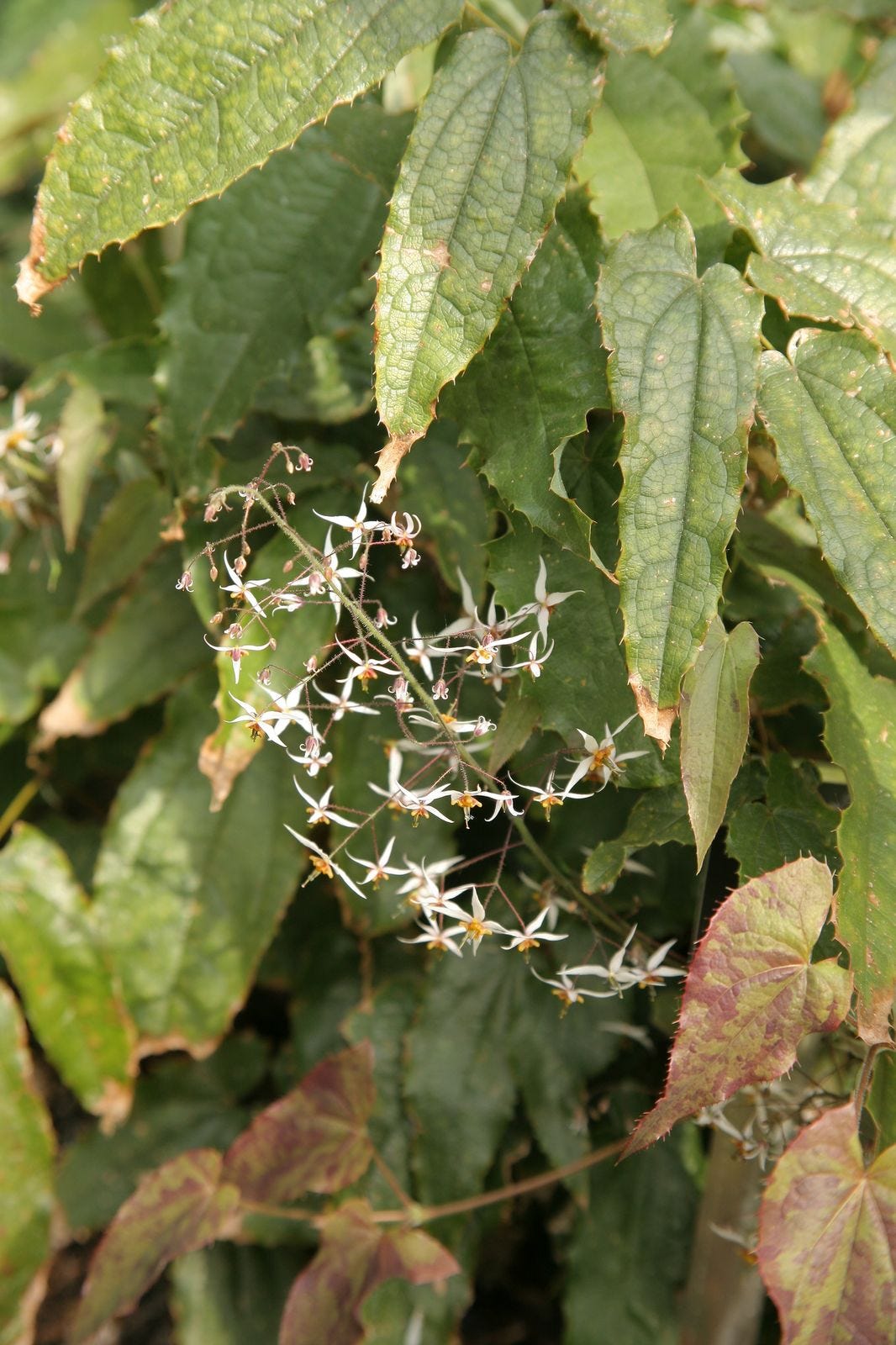
Epimedium pubescens https://powo.science.kew.org/taxon/urn:lsid:ipni.org:names:107306-1 Digital Image © Board of Trustees, RBG Kew http://creativecommons.org/licenses/by/3.0/
I started researching for this Substack back in December 2022, and I’ve been growing E. grandiflorum and a hybrid for the last two seasons. Although clump-forming, I find them to be quite slow growing, and grandiflorum leaves are only about the size of your thumb.
Due to their native Eastern Asia and Mediterranean habitats, they have evolved to cope with winter rain and summer drought. This makes them useful groundcover plants, as well as being a source of herbal materials.
Beware that if you overfeed them, you can kill them, as they are used to more impoverished woodland soils. But you can add a little blood, fish and bone (BFB) slow-release fertiliser each year.
Extracts from leaves, branches, flowers, and roots can be used medicinally, but most preparations use the leaves.
More than 270 compounds have been identified from 52 species of Epimedium. 52% of these are flavonoids consisting of epimedin A, epimedin B, epimedin C and icariin.
E. grandiflorum alone has more than 50 secondary metabolites and is used to treat osteoporosis, impotence, rheumatic arthritis (RA), and hypertension in Japan and China4. When 5g/kg of glycosides from the herb were administered to guinea pigs for 8 weeks, they demonstrated a significant increase in total body weight, including weights of the testicles, epididymis, adenohypophysis, and seminal vesicles.
Its glycosides also stimulated sensory nerves linked to sexual arousal signals, also reducing blood pressure and peripheral resistance in animal models that were studied5.
The epimedins and icariin are a sub-class of flavonoid called a prenylated flavonoid or prenylflavonoid6. Some of these are known to have phytoestrogenic or antioxidant properties and are classed as adaptogens in herbalism. An adaptogenic substance can stabilise physiological processes and promote homeostasis7.
From Wiki:
A phytoestrogen is a plant-derived xenoestrogen (a type of estrogen produced by organisms other than humans) not generated within the endocrine system, but consumed by eating plants or manufactured foods.[1] Also called a "dietary estrogen", it is a diverse group of naturally occurring nonsteroidal plant compounds that, because of its structural similarity to estradiol (17-β-estradiol), have the ability to cause estrogenic or antiestrogenic effects.[2]
Phytoestrogens are not essential nutrients because their absence from the diet does not cause a disease, nor are they known to participate in any normal biological function.[2] Common foods containing phytoestrogens are soy protein, beans, oats, barley, rice, coffee, apples, carrots (see Food Sources section below for bigger list).
Its name comes from the Greek phyto ("plant") and estrogen, the hormone which gives fertility to female mammals. The word "estrus" (Greek οίστρος) means "sexual desire", and "gene" (Greek γόνο) is "to generate". It has been hypothesized that plants use a phytoestrogen as part of their natural defense against the overpopulation of herbivore animals by controlling female fertility.[3][4]
The similarities, at the molecular level, of an estrogen and a phytoestrogen allow them to mildly mimic and sometimes act as an antagonist of estrogen.[2] Phytoestrogens were first observed in 1926,[2][5] but it was unknown if they could have any effect in human or animal metabolism.
In the 1940s and early 1950s, it was noticed that some pastures of subterranean clover and red clover (phytoestrogen-rich plants) had adverse effects on the fecundity of grazing sheep.[2][6][7][8]
Chemically, the prenyl group is attached to a flavonoid backbone, and it is thought that the addition of hydrophobic prenyl groups facilitates attachment to cell membranes, increasing the potential reactivity of the original flavonoid.



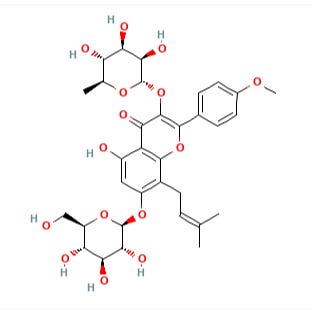

Sorry, folks, but when I followed this up, they had already sold out:
Literature review methodologies
I ran some keyword searches on PubMed and other online journals. For “icariin” alone on PubMed, this returned 1573 results, with papers dating back to 1988.
For this review, I searched for papers relating to icariin and/or its metabolites and their therapeutic interactions in relation to a range of pathologies. These will be considered in sections. Part I will focus on cancer studies and pharmacokinetics. The visual abstract gives a clue as to why I need to serialize these reviews.
A PubMed search for “icariin” and “cancer” returned 184 results for papers from 1995.
In contrast, a search of the Cancer Research UK repository (all years) returned zero results:
However, a search for “chemotherapy” returned 1235 results. Now there’s a shocker:
In 2021/22, they raised a total of £668m, and of this £443m was committed towards cancer research projects that run up to five years in duration. None of this appears to involve research into icariin. It’s the same story with other reviews of known therapeutics with anti-cancer effects, such as quercetin and ivermectin.
A search of the American Association for Cancer Research website also returned zero results:
A 2019 study by Kamath et al using US data on revenues for cancer research by non-profit organisations (NPOs) showed that breast cancer, leukaemia, lymphoma, and paediatric cancers were all well funded, whereas “embarrassing” or stigmatized cancers like lung and liver were underfunded8.
And funding was also disproportionally lower for cancers like colon, endometrial, bile duct, cervical, ovarian, and pancreatic in proportion to how many deaths they cause9:
All types: $4.6 billion.
Breast: $460 million.
Leukaemia: $201 million.
Paediatric: $177 million.
Lymphoma: $145 million:
Lung: $92 million.
Prostate: $74 million.
Pancreatic: $58 million.
Multiple myeloma: $51 million.
Ovarian: $23 million.
Brain: $20 million.
Colorectal: $18 million.
Neuroendocrine: $17 million.
Melanoma: $14 million.
Nonmelanoma skin: $7 million.
Liver and bile duct: $5.8 million.
Myelodysplastic syndromes: $5.6 million.
Cervical: $5.4 million.
Endometrial: $5.4 million.
Sarcoma: $5.1 million.
It is clear that there needs to be a review of research spending priorities.
Regarding icariin and “atherosclerosis”, PubMed returned 27 results for papers posted from 2004; "cardiovascular" returned 135 papers from 1997 onwards.
Moving on to the British Heart Foundation, a search for icariin again returned zero results.
For “statins” we get 214 results:
American Heart Foundation website and “icariin”:
The same website and “statins” returned 264 entries:
One of the purposes of this review is to highlight the need to bridge this information and funding gap and raise awareness of the many potential health benefits relating to icariin, either in addition to or as more efficacious alternatives to the current allopathic offerings.
There should be a large monetary incentive to look into repurposed or alternative therapeutics, especially those like icariin with a large body of research behind them and usage in TCM going back thousands of years.
“According to the OECD’s modelling, cancer could add £14.4bn to the UK’s health spending every year until 2050.10” Accounting for inflation and a recent 9-sigma increase in cancer cases, it will be substantially more than this moving forward.
Excess deaths due to cardiovascular-related incidents show a similar pattern since ~2021. In the NHS, treating cardiovascular disease (CVD) imposes a considerable financial burden, estimated at £7.4 billion per year in 2019, and this figure will now be inflated somewhat, along with the cost trend of cancer therapies11.
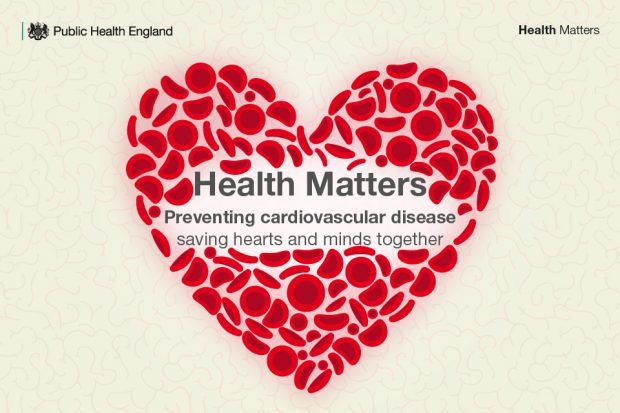
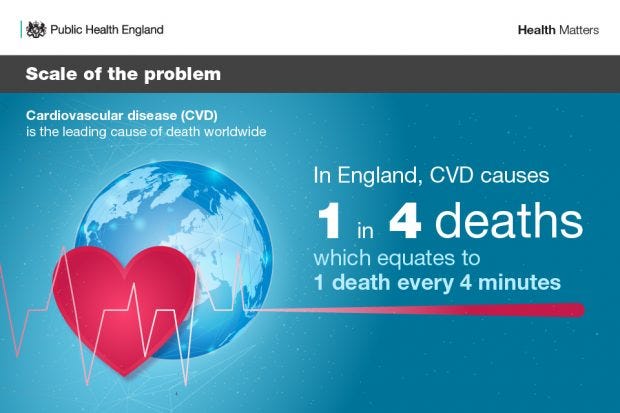
Pharmacokinetics Studies
To be of any practical therapeutic value, it first needs to be established that icariin or its metabolites are biologically available within their therapeutic window (a range of doses optimized between efficacy and toxicity12). This can be indicated using in vivo animal studies, often using rats or mice due to genetic and physiological overlap with humans, and then using clinical data for confirmation.
Rats share about 90% of their genome with humans; their genome is mapped in detail, and they can undergo gene manipulation as required13.
A 2006 evaluation of the toxicity of water extracts on mouse bone marrow was conducted, and found there were no mutagenic effects and the LD50 was higher than 80g/kg. The IC50 in Chinese hamster ovary cells and lung cells were 55.4 and 19.53 mg/ml, respectively, and all toxicity tests were negative14.
To convert the effective dose in mice to a human equivalent, a scaling factor of 12.3 may be applied, but this is more art than science; the figure of 12.3 for human dose conversion is derived from body surface area and metabolic rate.
The scaling factor for rat to human conversion is 6.215.
A comparative pharmacokinetics study of icariin (ICA) and icariside II (ICA II) in rats indicated that 91.2% of ICA was transformed into ICA II after intravenous administration. In other words, most of the icariin is very quickly metabolised into ICA II.
Cₘₐₓ is the maximum (or peak) serum concentration that a drug achieves in a specified compartment or test area of the body after the drug has been administered and before the administration of a second dose. It is a standard measurement in pharmacokinetics16.
In the field of pharmacokinetics, the area under the curve (AUC) is the definite integral of the concentration of a drug in blood plasma as a function of time (this can be done using liquid chromatography–mass spectrometry)17.
After oral administration, the Cmax and AUC0–t of ICA II were 3.8 and 13.0 times higher, respectively, than those of ICA, but only 12.1% and 4.2% higher after IV administration. This has a bearing on studies into pharmacological action18.
A randomized, double-blind, placebo-controlled human safety and pharmacokinetics study of orally administered icariin also found that at all doses, either very low or undetectable blood levels of ICA were found. This isn’t surprising as ICA is quickly metabolised to ICA II. From the 24 healthy adult participants, tolerability was good except at the highest dose of 1680 mg/day. 2 participants had to discontinue icariin due to gastrointestinal symptoms19.
And when a single oral dose of 370, 740, or 1110 mg of a standardized Epimedium prenylflavonoid extract was administered to 30 healthy male subjects in a randomized, placebo-controlled trial, no adverse effects were reported, and the extracts were well tolerated. The principal serum metabolites detected were also ICA II, as well as desmethylicaritin.
ICA II had a T max of between 4.1 - 4.3h (AUC0→∞ of 23.0), and desmethylicaritin had a delayed T max of 24.1 - 24.4h (AUC0→∞ of 126.1). These levels were consistent with those demonstrated to have anti-osteoporotic effects in in vitro and in vivo studies, and ICA, ICA 1, and icaritin levels were below detection limits20.
Another study used ovariectomized rats as a model for osteoporosis. It found that when icariin was administered in capsules with a mixture of enzymes called “snailase21”, a 1:1 ratio promoted the proliferation of bone-forming rat calvarial osteoblasts due to 50% increased bioavailability22.
When flavonoid extract of Herba Epimedii was administered to rats at a dose of 0.69 g/kg (corresponding to 42 mg/g icariin), other researchers noted that the tissue distribution characteristics exhibited a significant gender difference. A total of 11 potential metabolites were found in rat faeces collected in different time periods after oral and intramuscular administration.
The peak tissue concentration of icariin appeared after 1h from administration, apart from the liver and female reproductive organs, which peaked after only 0.5h; icariin is quickly and widely distributed in tissues. Concentrations in male rats were generally much higher than those in female rats, with the peak AUCs in the following order:
Mail rats: liver > lung > spleen > heart > kidney > brain > testicle.
Female rats: liver > uterus > heart > ovary > lung > kidney > spleen > brain.
Levels of ICA dropped very quickly at 4h after administration; it is rapidly absorbed and metabolised, or eliminated. The liver, lungs, and reproductive organs were found to be the main target sites of ICA. This may help explain its use in Chinese medicine to treat male sexual functional decline and female menopausal syndrome23.
ICA and ICA II show good solubility in organic solvents such as ethanol, ethyl acetate, acetone, or chloroform24, but they are almost insoluble in water25. Due to poor solubility in water as well as low membrane permeability (~10−7 cm/s) their bioavailability is low26. With ICA, water solubility reaches only 12.02%27.
Hydrophilic side groups on icariin consist of sugar moieties, and these are poorly absorbed by the human intestine and have a long retention time in the bloodstream28. In contrast, hydrophobic particles are quickly opsonized by plasma proteins29 and removed (ie, they are marked for phagocytosis30).
Strategies to improve bioavailability
Szabo et al (2022) reviewed techniques to improve the bioavailability of ICA and its derivatives31. Of particular note:
Forming phospholipid complexes with icariside II and reducing the particle size increased bioavailability 342% in one study involving rats32.
Cyclodextrins (CDs) are oligosaccharides that can form complexes with drugs and offer greatly improved bioavailability, water solubility, dissolution, stability, and taste33. These can be added to icariin to improve aqueous solubility by almost 35 times at 60°C and 28 times at 50°C34.
A related study found that solubility was 36 times higher (525 μg/ml) than un-complexed icariin35. Potential disadvantages include the formation of insoluble aggregates; risk of toxication if administered by IV (because they cannot be hydrolysed), and due to elimination via the kidneys36. Oral administration is safe as CDs are metabolized in the colon37.
Nanotechnology can be used to improve pharmacokinetics in different ways. Aqueous solubility can be enhanced by encapsulation in nanocarriers38, and they can protect drugs from biodegradation or excretion39; distribution and targeting can be enhanced40; tumour cells can be targeted by selectively redirecting chemotherapeutic drugs and drug penetration increased41.
Formation of micelles (an aggregate of surfactant amphipathic lipid molecules dispersed in a liquid to form a colloidal suspension42). Icariside II-loaded binary mixed micelles in a 4:1 mole ratio of HS15:F127 (Solutol®:Pluronic®
)showed the highest bioavailability. The AUC0–∞ of those micelles was 317% greater than that of the unmodified Icariside II43. Another study indicated an increased relative bioavailability of 500% compared to icariin and 216% compared with F127-ICA micelles44. As with nanotechnology, tumour cells can be targeted too45.
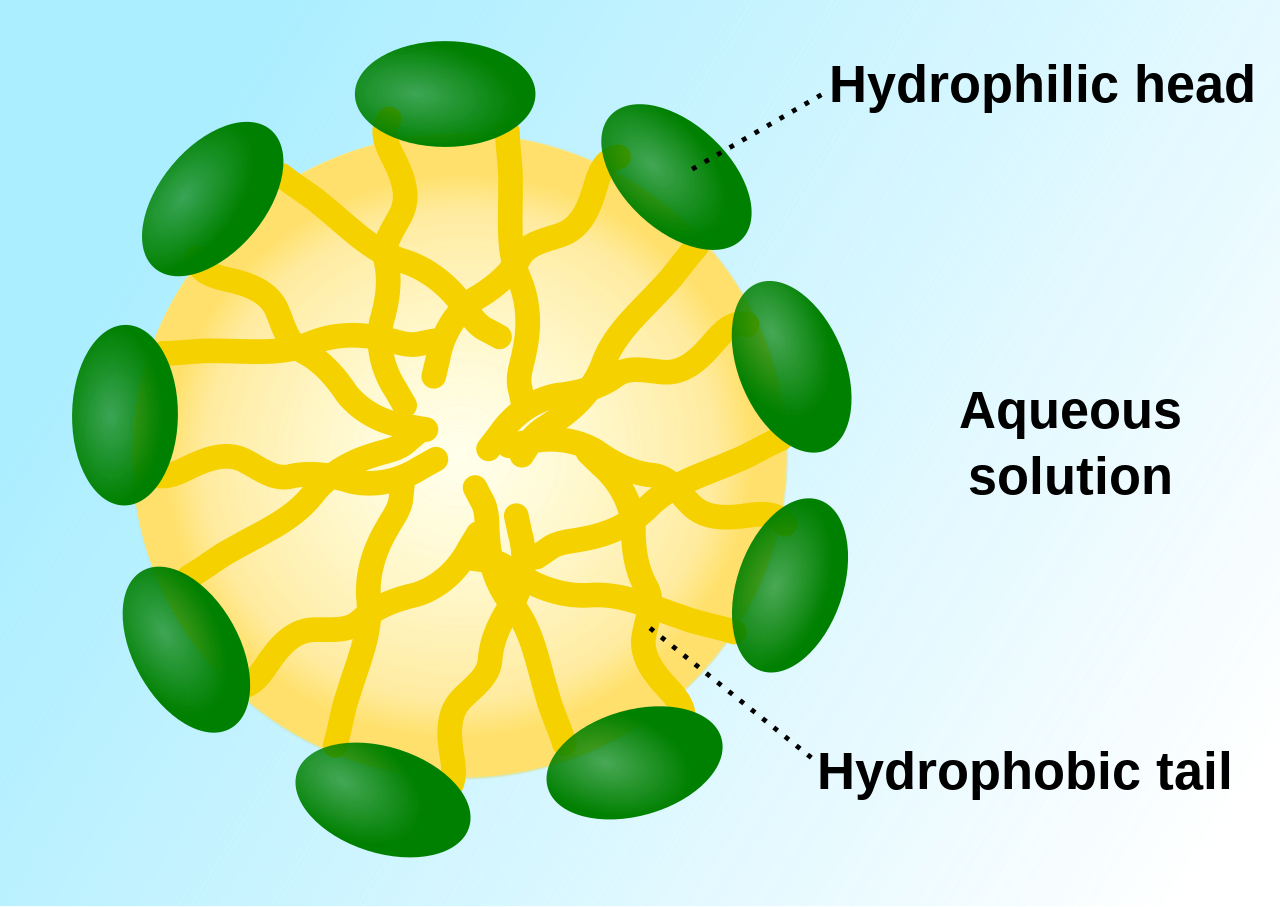
Nanocarriers. In an an vitro experiment, osteoblast proliferation was significantly enhanced by using foetal bovine serum (FBS) exosomes to carry ICA46.
Nanogels. Self-assembled thermosensitive hydrogel system (icariin-NGSTH). When administered to mice with an induced mild stress model demonstrated very rapid antidepressant effects47. And hyaluronic acid–icariin hydrogels (HA-ICA) were shown to mitigate the burst release of ICA, demonstrating long-lasting bioactivity48.
Nanocrystals composed of icaritin by precipitation with particle sizes of ~200nm had increased surface area relative to raw icaritin and bioavailability was doubled49.
Microspheres composed of gelatine/hyaluronic acid–icariin with a glutaraldehyde cross-linker demonstrated slower release rates of ICA, after modifying the content of the cross-linker50.
Extracellular vesicles (EVs). One great advantage to using these is that they can load both hydrophobic and hydrophilic drugs51, but the process needs further improvements to increase the encapsulation efficiency of only ~1%52.
Solid lipid nanoparticles synthesized with lyophilized icariin demonstrated a lengthened half-life of ICA in the blood, increased relative bioavailability, and uptake in the kidney was also greatly increased53.
Other techniques that have been researched include polymorphism via structural transformation54, absorption enhancement by hydrolysis into secondary glycoside and aglycone forms55, and colon-specific drug delivery by using alginate-chitosan microspheres loaded with ICA to treat colitis56.
Of all these, the most successful was the first. Phospholipid complexes demonstrated a 6.57-fold bioavailability improvement, but combining these techniques could increase this further still, due to synergism.
Anti-cancer properties

In recent years, there has been a great deal of interest in studying the anti-cancer effects of icariin and its metabolites. Almost all of this research has been conducted by Chinese scientists.
Data gathered from in vitro and in vivo experiments demonstrated anti-cancer properties against a wide range of cancer cell types through mechanisms including apoptosis, cell cycle modulation (e.g., cell cycle arrest), anti-angiogenesis, anti-metastasis, and immunomodulation.
Of particular note are in vitro studies that demonstrate the efficacy of Epimedium metabolites at targeting cancer stem cells and drug-resistant cells. This is an area of cancer treatment that continues to challenge commonly adopted protocols as used in allopathic medicine57.
Not unrelated to this, many Western pharmacological studies are ill-equipped to analyse herbal synergetic effects. Icariin is not a wonder-drug that can cure advanced stage IV metastatic cancer, and it is wrong to think of it in those terms. Drug companies may view each metabolite in isolation as a failure, whilst ignoring the long-term benefits of taking Epimedium extracts alongside other more conventional drugs and treatments.
A reduction in the risk of recurrence through inhibition of cancer stem cell growth may not be clinically dramatic or easy to quantify, but it is of immense value to the long-term prognosis of the patient.
A good herbalist or TCM practitioner may also compound it alongside other therapeutics, and I include an example of this in part II.
I discussed the importance of maintaining a healthy gut microbiome previously. This applies equally to herbs such as Epimedium. Icariin is quickly biotransformed by human intestinal bacteria in anaerobic conditions to icariside II, and in some cases desmethylicaritin, via icariside II and icaritin58. However, there are cancer cell line studies that used icariin itself to study its effects59 (Table 1):

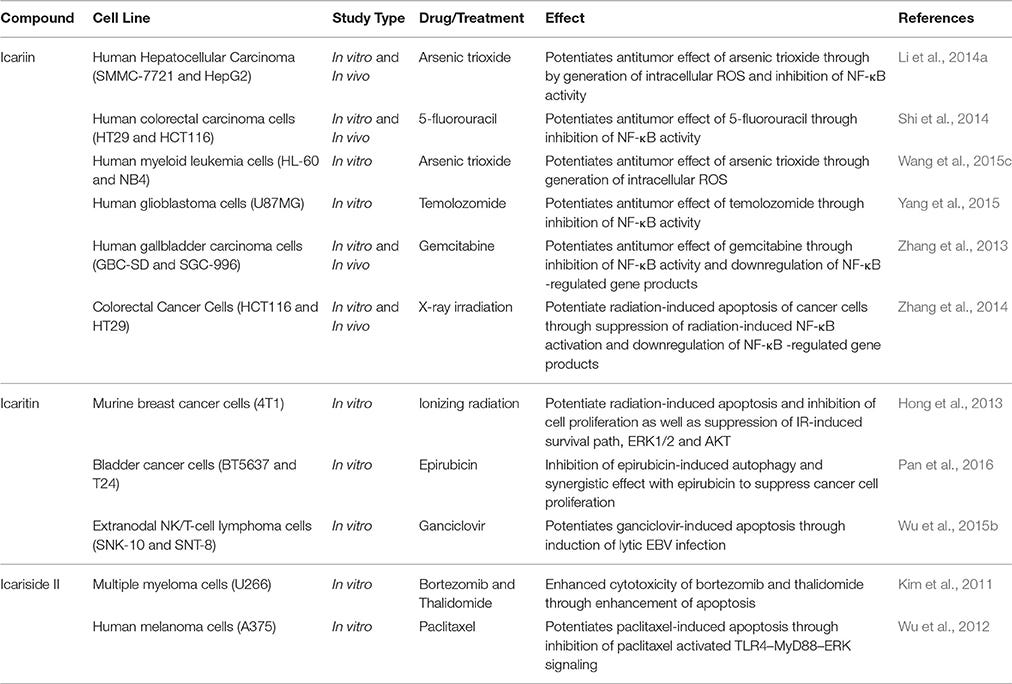
This Substack would be the size of a PhD thesis or need serialising over several months if I were to walk through all the different types of research that have been conducted. Instead, I will summarise the cell lines studied and which cancer pathways were affected.
Icariin
Icariin, the main active ingredient of Herba Epimedii, is also classed as a kaempferol60. Kaempferol has a bitter flavour, is a yellow crystalline solid that melts at 276-278°C and is slightly soluble in water but highly soluble in solvents including hot ethanol, ethers, and our friend DMSO61.
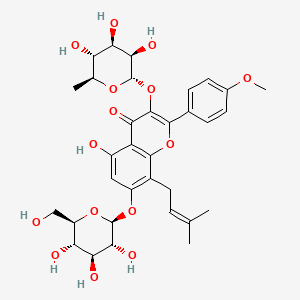
Icariin is particularly useful for potentiating the effect of existing allopathic treatments, especially where the cancer cells have become resistant, and treatment options are limited, i.e.“cut, poison, burn”, which also became the title of a prophetic documentary I need to watch:

As these are quite complex, I’ve included figures from other sources to illustrate the complex cancer pathways affected by icariin and its metabolites.
Cell lines and pathways studied:
Breast cancer stem cells, through the modulation of the lncRNA NEAT1/TGFβ/SMAD2 signalling pathway, and inhibition of epithelial mesenchymal transition (EMT)62.
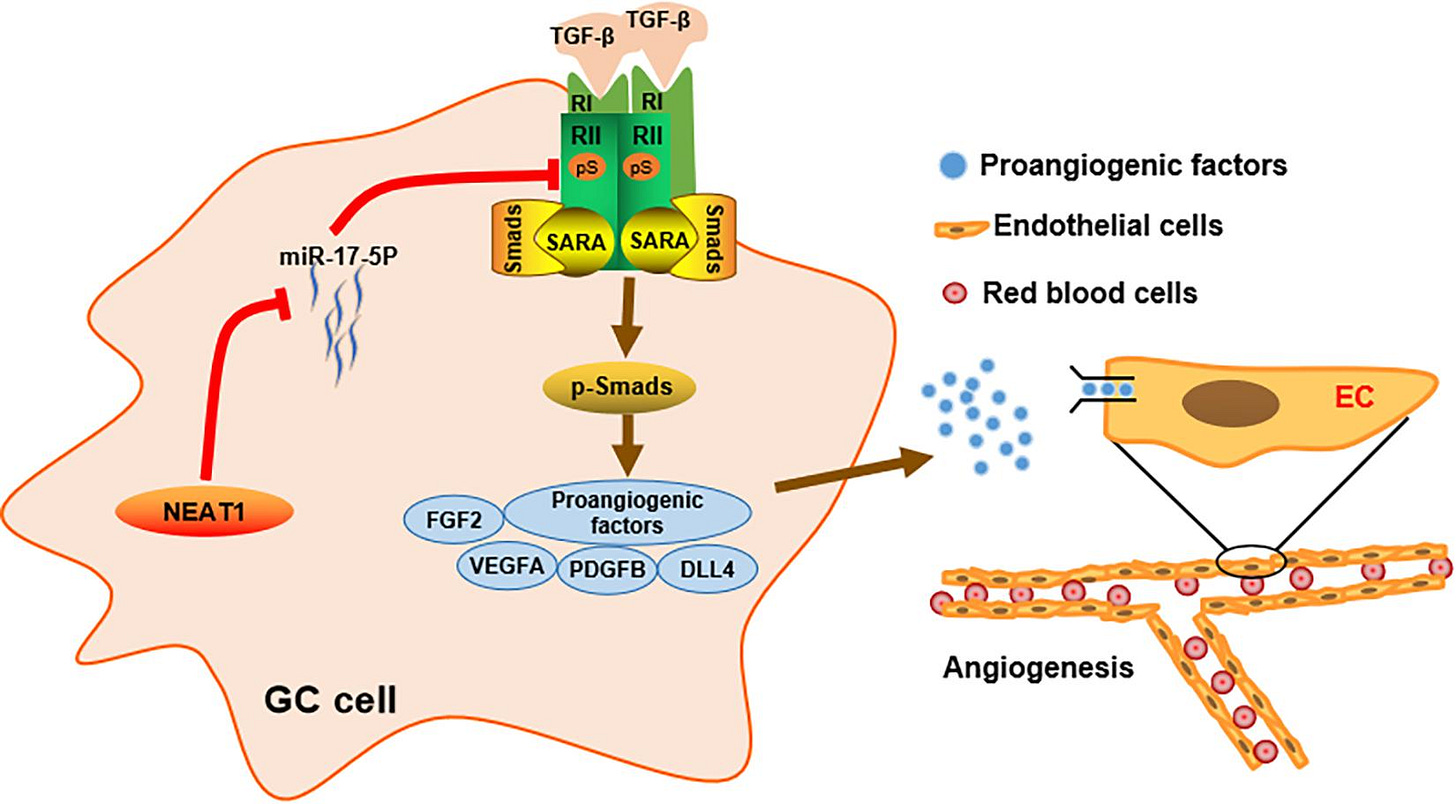
From: “Figure 6. Schematic diagram of the mechanism of LncRNA NEAT1 mediated angiogenesis in gastric cancer.” https://www.frontiersin.org/journals/cell-and-developmental-biology/articles/10.3389/fcell.2021.705697/full This is from a study that investigated which long noncoding RNAs (lncRNAs) are associated with breast cancer stem cell populations. If you can target some of these (e.g. with icariin) then you can help to prevent recurrences:

From: “Figure 1. Schematic overview of the CSC and EMT-related functions of lncRNAs that have been associated with breast CSCs. This is a representation of functions summarized in Table 1. LncRNAs implicated with EMT genes and the processes are located in the red area of the cell. If known, the cellular localization of the lncRNA is indicated by the color coding. The figure was created with Biorender.com.” The Missing Lnc: The Potential of Targeting Triple-Negative Breast Cancer and Cancer Stem Cells by Inhibiting Long Non-Coding RNAs Triple-negative breast cancer cells (TNBCs), by inhibition of the JNK/c-Jun signalling pathway63.
TNBC autophagy, through the AMPK/mTOR/ULK1 pathway64.
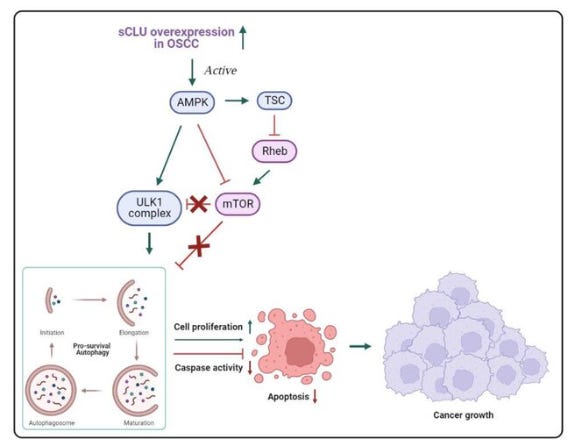
Glioma, through the modulation of NF-κB/MMP-9 signalling and the inhibition of cancer cell migration65. MMPs are Matrix Metalloproteinases. This type of proteinase is an enzyme that helps to degrade the extracellular matrix of proteins and molecules that surround cells. This makes it much easier for a cancer to spread metastatically and invade new tissues.

From: “Figure 1. Overview of the role of NF-κB in GBM mesenchymal differentiation. NF-κB is activated in mesenchymal GBM cells by a series of cell intrinsic and extrinsic signals (e.g., genetic alterations and microenvironmental cytokines, respectively) that promote mesenchymal differentiation. Subsequently, nuclear NF-κB promotes mesenchymal differentiation by inducing the expression of master mesenchymal transcription factors, including, STAT3, CEBPB and TAZ, and by directly inducing expression of mesenchymal proteins such as CD44, vimentin, N-cadherin. In addition, NF-κB promotes mesenchymal changes in the tumor microenvironment by regulating the composition of secreted cytokines, ECM proteins and other enzymes to promote invasion, angiogenesis and resistance to therapy. Active NF-κB promotes mesenchymal differentiation in conjunction with other transcription factors and co-regulators, such as STAT3, Bcl-3 and HIF-1α.” https://www.mdpi.com/2073-4409/7/9/125 Generalised anti-tumour effects, through the modulation of myeloid-derived suppressive cells (MDSCs) functions66 67; 68
Ovarian cancer cells, through targeting the miR-1-3p/TNKS2/Wnt/β-catenin signalling axis69.
β-catenin is a dual-function protein that is involved in cell-to-cell adhesion regulation and gene transcription. Mutations and overexpression of β-catenin is associated with several different cancers.
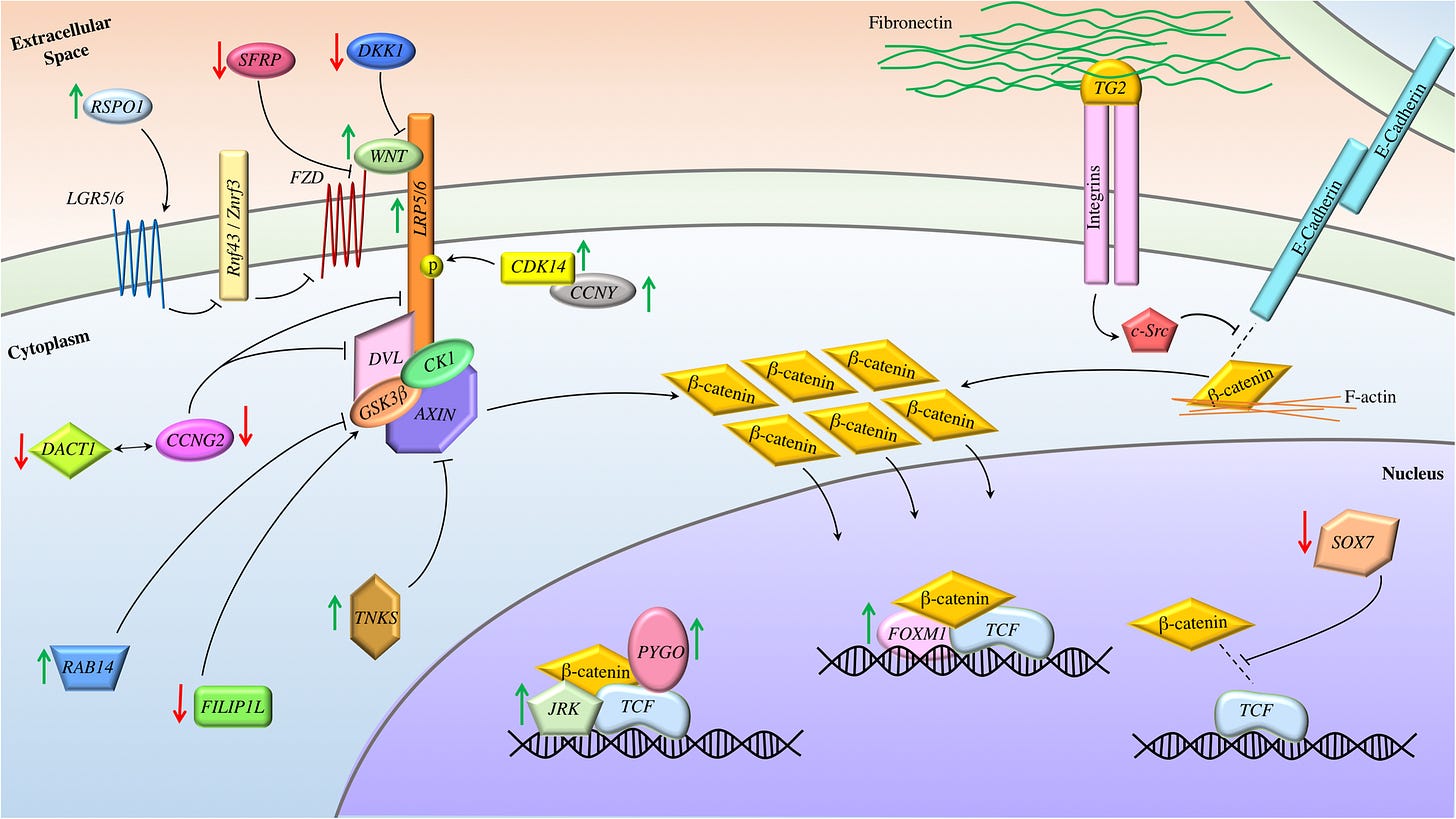
From: “Fig. 2 Proposed mechanisms of Wnt/β-catenin dysregulation in ovarian cancer. The Wnt/β-catenin pathway is regulated by many factors, whose aberrant expression leads to the hyperactivation of β-catenin in the EOC. Note that green arrows indicate proteins whose expression is upregulated in EOC, while red arrows indicate downregulation. DKK1 and SFRP2, which inhibit the dimerization of FZD and LRP5/6 and directly prevent FZD activation, respectively, are downregulated in EOC tumors. In contrast, Wnt ligands activate the pathway by forming a receptor complex with FZD and LRP5/6, while R-spondins bind LGRs and prevent the sequestration of the FZD. Both ligands and LGRs are overexpressed EOC. CCNY and CDK14 are also upregulated in EOC and have been suggested to work together to promote LRP5/6 phosphorylation and therefore activation. CCNG2, which is downregulated in EOC, decreases LPR6 and DVL levels. It may also interact with DACT1, also downregulated in EOC tumors, to promote DVL degradation. TNKS destabilizes AXIN to increase β-catenin activity and TNKS1 is known to be up-regulated in EOC. RAB14 inhibits the activity of GSK-3β and its upregulation contributes to higher β-catenin activity in EOC. FLIP1L, whose expression is negatively correlated with EOC progression, enhances GSK-3β activation in the destruction complex and is downregulated in EOC. This inhibition of the destruction complex results in the accumulation of β-catenin within the cytosol and its translocation into the nucleus. In addition, TG2, which is overexpressed in EOC, binds to integrin and fibronectin. This results in the recruitment of c-Src and disruption of E-cadherin/β-catenin complex on the membrane, which contributes to the accumulation of β-catenin within the cytoplasm. Finally, within the nucleus, higher expression of several co-activators of β-catenin/TCF, such as PYGO, JRK, and FOXM1, and lower expression of SOX7, which is known to inhibit the interaction between β-catenin and TCF, lead to the higher transcriptional activity of this complex”. https://ovarianresearch.biomedcentral.com/articles/10.1186/s13048-019-0596-z/figures/2 Cisplatin‑resistant ovarian cancer cells, by making them more chemosensitive via the AKT/mTOR/ATG5 pathway70.
Ovarian cancer cells, through miRNA-21 by targeting PTEN, RECK, and Bcl-271. 72

From: “Figure 9. The regulatory mechanisms between miR-21 and PTEN/RECK/Bcl-2 in non-small lung cell carcinoma cells transfected with pGCMV-hsa-miR-21. At the post-transcriptional level, PTEN/RECK/Bcl-2 expression level was regulated by miR-21. Knockdown of miR-21 activated PTEN and RECK, and repressed Bcl-2 at the protein level. PTEN, RECK and Bcl-2 may have single or combined effect on NSCLC cell proliferation, migration, invasion, and apoptosis at the protein level.” https://www.researchgate.net/publication/264431276_MicroRNA-21_miR-21_Regulates_Cellular_Proliferation_Invasion_Migration_and_Apoptosis_by_Targeting_PTEN_RECK_and_Bcl-2_in_Lung_Squamous_Carcinoma_Gejiu_City_China/figures?lo=1 Cervical cancer cells, by reducing the TLR4/MyD88/NF-κB and Wnt/β-Catenin pathways73.
Prostate cancer, through modulation of the PI3K-Akt signalling pathway and the Warburg Effect, when administered with curcumol74;
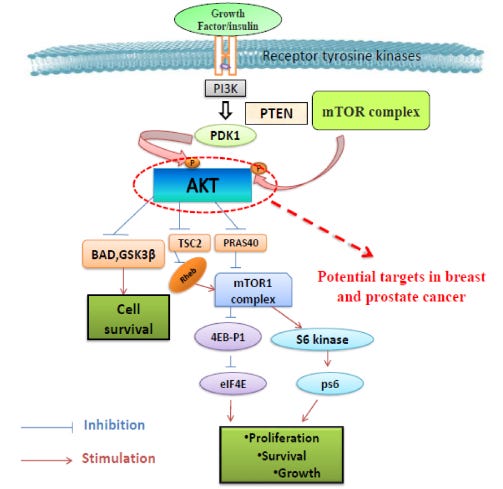
From: “Fig. (4). Overview of the PI3K/AKT/mTOR signaling pathway in prostate cancer. AKT is activated downstream of the PI3K pathwayviaphosphorylation by PDK1. Activated AKT regulates downstream effectors such as BAD, GSK3β, TSC2, and PRAS40 to control various cel-lular processes, including protein synthesis, cell proliferation, growth, and survival.” https://www.researchgate.net/publication/345157605_Overview_of_Protein_Kinase_B_Enzyme_A_Potential_Target_for_Breast_and_Prostate_Cancer Gallbladder cancer, through the suppression of NF-kB, via potentiation of the chemotherapeutic medication Gemcitabine75.
Gastric cancer cells, through the inhibition of invasion and migration via the complex Rac1 pathways76. Rac1 is a small signalling G protein that also helps to maintain cancer stem cells, cancer cell motility, and growth:
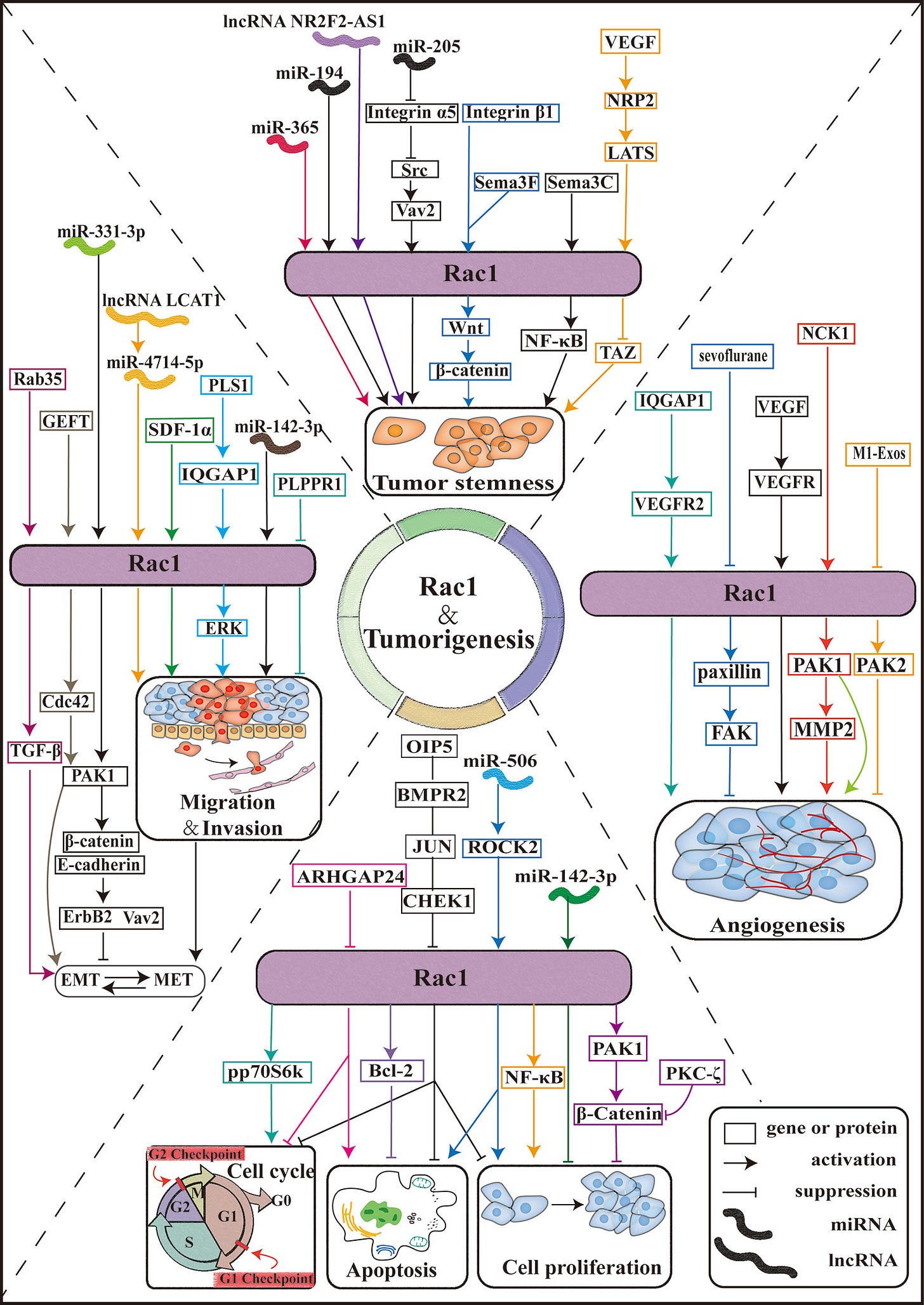
From: “Figure 3 Rac1 is involved in tumorigenesis. Schematic diagram of the Rac1 signaling pathway and effectors. The Rac1 signaling pathway plays an important role in the pathobiology of various tumor progression processes, including tumor cell proliferation, cell cycle, apoptosis, tumor cell invasion, and migration, tumor angiogenesis, and tumor cell stemness. ARHGAP24: Rho GTPase activating protein 24; PKC-ζ: protein kinase C-ζ; PAKs: p21 activated kinase; M1-Exos: M1-type macrophage-derived exosomes; IQGAP1:IQ-guanosine triphosphatease-activating protein 1; SDF-1α: stromal cell-derived factor 1-α; Sema3F: semaphorin-3F; Sema3C: Semaphorin-3C.” https://www.frontiersin.org/journals/oncology/articles/10.3389/fonc.2021.674426/full Colon carcinoma cell growth and metastasis, via the enhancement of tumour suppressor p53 activities77.
Lung adenocarcinoma cells, through activation of the mitochondrial apoptotic pathway78; through the miR‑205‑5p/PTEN axis via the PI3K/Akt pathway79.
Icariin should also be able to target other cancers, including nasopharyngeal carcinoma and colorectal cancer cell metastasis, by targeting desmocollin-2 (DSC2, a cadherin-type protein that functions to link adjacent cells together) via the same pathway80.
We found that up-regulated serum exosomal miR-205-5p levels were associated with NPC progression and worse overall survival of NPC patients. miR-205-5p over-expression significantly increased tube formation, wound healing, migration and invasion of NPC cells, and lung metastasis of NPC tumors, whereas miR-205-5p inhibition had opposite effects.
Exosomal miR-205-5p from NPC cells promoted the migration, tube formation, and microvessel density (MVD) of HUVECs in vitro and in vivo. Furthermore, bioinformatics-, luciferase reporter-, and biotinylated miR-205-5p-based pull-down assays indicated that miR-205-5p directly bound to the 3′ UTR of desmocollin-2 (DSC2).
Exosomal miR-205-5p targeted DSC2 to enhance the EGFR/ERK signaling and MMP2/MMP9 expression, promoting angiogenesis and NPC metastasis, which was abrogated by DSC2 over-expression.
Finally, the levels of miR-205-5p transcripts were positively correlated with MVD but negatively with DSC2 expression in NPC tissues, and patients with miR-205high/DSC2low NPC had worse overall survival.
In conclusion, exosomal miR-205-5p promotes angiogenesis and NPC metastasis by targeting DSC2 to enhance EGFR/ERK signaling and MMP expression. This exosomal/miR-205-5p/EGFR/ERK axis may be a new therapeutic target for intervention of NPC metastasis.
From: “Exosomal miR-205-5p enhances angiogenesis and nasopharyngeal carcinoma metastasis by targeting desmocollin-2” (2022)
https://www.sciencedirect.com/science/article/pii/S2372770522000250
DSC2 involvement in colorectal cancer:

Oral squamous cell carcinoma, through the inhibition of TLR4 and the phosphorylation of NF-κB P65, via mitigation of the growth and invasion (i.e. metastatic) abilities81;
Osteosarcoma, through administering alongside doxorubicin (DOX)-loaded hydrogels. ICA not only enhanced the anti-tumour effects of the chemotherapy, but also helped to prevent dose-limiting DOX-induced osteoporosis82.
Parting shots
AI tech is “progressing” backwards.
I refuse to use it to generate content, as you can normally tell by the repetition, lack of the “human touch”, and excess wordage. I’d also rather not delegate critical thinking and research to a biased algorithm that rates DEI as being more important than mass genocide:
There is some utility for using AI-assisted literature review searches, provided that the output includes links to papers that you can verify and cite later. In this respect, it is no different from, say, the old Google search engine.
But for drafting content for academic papers, to me, it is worse than useless due to inbuilt biases, hallucinations, and downright bordering on fraud.
ChatGPT's hallucination problem is getting worse according to OpenAI's own tests and nobody understands why
Published: 6 May 2025
Remember when we reported a month ago or so that Anthropic had discovered that what's happening inside AI models is very different from how the models themselves described their "thought" processes? Well, to that mystery surrounding the latest large language models (LLMs), along with countless others, you can now add ever worsening hallucination. And that's according to the testing of the leading name in chatbots, OpenAI.
The New York Times reports that an OpenAI's investigation into its latest GPT o3 and GPT o4-mini large LLMs found they are substantially more prone to hallucinating, or making up false information, than the previous GPT o1 model.
"The company found that o3 — its most powerful system — hallucinated 33 percent of the time when running its PersonQA benchmark test, which involves answering questions about public figures. That is more than twice the hallucination rate of OpenAI’s previous reasoning system, called o1. The new o4-mini hallucinated at an even higher rate: 48 percent," the Times says.
"When running another test called SimpleQA, which asks more general questions, the hallucination rates for o3 and o4-mini were 51 percent and 79 percent. The previous system, o1, hallucinated 44 percent of the time."
OpenAI has said that more research is required to understand why the latest models are more prone to hallucination. But so-called "reasoning" models are the prime candidate according to some industry observers.
Of little surprise, but the golden rule for the next article is “never mention government food and health policies, especially their vax schedules, but blame the individual”:
Life Expectancy in England Hits Sharp Decline: Here's Why We Should All Be Paying Attention
Published: 19 February 2025
Europe’s life expectancy is stalling and it's not just a number on a chart. From the UK to the rest of the continent, the latest research reveals a troubling slowdown in how long we're expected to live.
The culprits? A mixture of poor diets, lack of physical activity and an ever-growing obesity epidemic. And England is experiencing the biggest slowdown.
The Numbers Don't Lie
A groundbreaking new study in The Lancet Public Health shows that the average increase in life expectancy across Europe has slowed dramatically since 2011. Between 1990 and 2011, life expectancy grew by 0.23 years every year. But from 2011 to 2019, that rate dropped to just 0.15 years.
Meanwhile, England experienced the biggest drop from 0.25 years annually between 1990 and 2011 to a paltry 0.07 years from 2011 to 2019. Other areas of the UK including Northern Ireland, Wales, and Scotland followed a similar trajectory, each seeing a significant drop.
What’s Driving This Crisis?
The reasons are clear: heart disease, cancer and rising obesity levels have all played a central role in slowing down life expectancy across Europe.
In an interview with The Guardian this week, Sarah Price, NHS England’s Director of Public Health, emphasised the need for urgent action: 'The slowdown in life expectancy improvements, particularly due to cardiovascular disease and cancer, highlights the urgent need for stronger action on the root causes – poor diet, physical inactivity, and obesity.'
Concluding remarks
I originally planned for the cancer literature review to be completed in one Substack, but as the word count exceeded 21,000 it will need to be discussed in Part II! It’s been a lot of work.
One of the reasons for this is that the therapeutic effects of Epimedium extracts are not restricted to just one compound, but other molecules that have been researched in isolation, such as Icaritin and Icariside II.
I will also discuss clinical trials and a COVID gene therapy-induced cancer pathway that icariin targets.
Icariin is highly affordable, legal in most countries, and you can easily grow your own in many parts of the world for just a few dollars a plant.
I recommend you buy several, though, as it is quite slow-growing, prefers shady spots, and doesn’t like being forced.
As it also grows in bamboo forests, I was hoping to finish with a shot of a panda munching away on Epimedium leaves. However, this wasn’t to be as their diet consists almost entirely of bamboo shoots.
Thank you for reading, and particular thanks must go to the founding members and paid subscribers for your long-term support. Without this, it would not be possible to maintain the hardware, software, and subscriptions that support this newsletter.
Disclaimer
This site is strictly an information website reviewing research into potential therapeutic agents. It does not advertise anything, or provide medical advice, diagnosis, or treatment. This site does not promote any of these as potential treatments or offer any claims for efficacy. Its content is aimed at researchers, registered medical practitioners, nurses, or pharmacists. This content is not a substitute for professional medical advice, diagnosis, or treatment. Always seek the advice of your physician or other qualified health provider with any questions you may have regarding a medical condition. Never disregard professional medical advice or delay in seeking it because of something you have read on this website. Always consult a qualified health provider before introducing or stopping any medications as any possible drug interactions or effects will need to be considered.
Any extracts quoted in the previous article are for non-commercial research and educational purposes only and may be subject to copyright from their respective owners.
References
Zhang-fu C, Ying C and Sen-lin L. Chinese Materia Medica. (2014), 574-575.
Tsun-Shen Y. Petal evolution and distribution patterns of Epimedium Linn. (Berberidaceae). Journal of Systematics and Evolution. 2002;40(6):481.
Bae, J. Y., Avula, B., Zhao, J., Raman, V., Wang, Y. H., Wang, M., Zulfiqar, F., Feng, W., Park, J. H., Abe, N., Ali, Z. and Khan, I. A. (2020) Analysis of prenylflavonoids from aerial parts of Epimedium grandiflorum and dietary supplements using HPTLC, UHPLC-PDA and UHPLC-QToF along with chemometric tools to differentiate Epimedium species. J Pharm Biomed Anal, 177 112843. [accessed Jan 5].
Ma, H., He, X., Yang, Y., Li, M., Hao, D. and Jia, Z. (2011) The genus Epimedium: an ethnopharmacological and phytochemical review. J Ethnopharmacol, 134(3) 519-541. [accessed Apr 12].
Prenylflavonoid - Wikipedia
Adaptogen - Wikipedia
Samuelson, K. Many of the deadliest cancers receive the least amount of research funding (2019)
https://news.northwestern.edu/stories/2019/07/disparities-cancer-research-funding/
Kamath SD, Kircher SM, Benson AB. Comparison of Cancer Burden and Nonprofit Organization Funding Reveals Disparities in Funding Across Cancer Types. J Natl Compr Canc Netw. 2019 Jul 1;17(7):849-854. doi: 10.6004/jnccn.2018.7280. PMID: 31319386.
Belloni, Annalisa. ‘The Cost of Cancer: What Does It Mean for the UK Economy?’ Cancer Research UK - Cancer News, 21 November 2024. https://news.cancerresearchuk.org/2024/11/21/the-cost-of-cancer-economy-uk-growth-mission-oecd-report/.
Health Matters: Preventing cardiovascular disease (2019)
https://ukhsa.blog.gov.uk/2019/02/14/health-matters-preventing-cardiovascular-disease/
Therapeutic index - Wikipedia
Smith, J. R., Bolton, E. R., & Dwinell, M. R. (2019). The Rat: A Model Used in Biomedical Research. Methods Mol Biol, 2018, 1-41. doi:10.1007/978-1-4939-9581-3_1
H.X. Sui, P. Gao, H.B. Xu. The safety evaluation of Herba Epimedii water extract. Carcinogenesis, Teratogenesis and Mutagenesis, 18 (2006), pp. 439-442
Kang, I., Buckner, T., Shay, N. F., Gu, L., & Chung, S. (2016). Improvements in Metabolic Health with Consumption of Ellagic Acid and Subsequent Conversion into Urolithins: Evidence and Mechanisms. Adv Nutr, 7(5), 961-972. doi:10.3945/an.116.012575
Cmax (pharmacology) - Wikipedia
Area under the curve (pharmacokinetics) - Wikipedia
https://en.wikipedia.org/wiki/Area_under_the_curve_(pharmacokinetics)
Cheng, T. et al. Comparative Pharmacokinetics Study of Icariin and Icariside Ii in Rats. Molecules, vol. 20, no. 12, 2015, pp. 21274-21286, doi:10.3390/molecules201219763.
Brown, E. Sherwood et al. Human Safety and Pharmacokinetics Study of Orally Administered Icariin: Randomized, Double-Blind, Placebo-Controlled Trial. Natural Product Communications, vol. 14, no. 6, 2019, p. 1934578X19856789, doi:10.1177/1934578x19856789.
https://journals.sagepub.com/doi/full/10.1177/1934578X19856789
Teo YL, Cheong WF, Cazenave-Gassiot A, Ji S, Logan S, Lee ZXK, Li J, Seng KY, Lee LS, Yong EL. Pharmacokinetics of Prenylflavonoids following Oral Ingestion of Standardized Epimedium Extract in Humans. Planta Med. 2019 Mar;85(4):347-355. doi: 10.1055/a-0806-7673. Epub 2018 Dec 6. PMID: 30522143.
Kornpointner C, Scheibelreiter J, Halbwirth H. Snailase: A Promising Tool for the Enzymatic Hydrolysis of Flavonoid Glycosides From Plant Extracts. Front Plant Sci. 2022 Jun 9;13:889184. doi: 10.3389/fpls.2022.889184. PMID: 35755698; PMCID: PMC9218754.
Liu C, Gao X, Liu Y, Huang M, Qu D, Chen Y. Icariin combined with snailase shows improved intestinal hydrolysis and absorption in osteoporosis rats. Biomed Pharmacother. 2017 Oct;94:1048-1056. doi: 10.1016/j.biopha.2017.07.163. Epub 2017 Aug 12. PMID: 28810527.
Xu S, Yu J, Zhan J, Yang L, Guo L, Xu Y. Pharmacokinetics, Tissue Distribution, and Metabolism Study of Icariin in Rat. Biomed Res Int. 2017;2017:4684962. doi: 10.1155/2017/4684962. Epub 2017 Nov 13. PMID: 29259982; PMCID: PMC5702950.
Xie J., Zhang K., Wang H., Yang X., Mao W., Liu C., Wang N. Determination of the Solubility, Dissolution Enthalpy, and Entropy of Icariin in Acetone, Acetoacetate, Chloroform, and Light Petroleum. Nat. Prod. Commun. 2020;15:1934578X20971491. doi: 10.1177/1934578X20971491.
Li C., Chen F.-F., Jia X.-B., Feng L., Tan X.-B. Effects and mechanism of epimedium polysaccharide on solubility of icariin and baohuoside I. China J. Chin. Mater. Med. 2021;46:5825–5831
Li Y., Sun S., Chang Q., Zhang L., Wang G., Chen W., Miao X., Zheng Y. A strategy for the improvement of the bioavailability and antiosteoporosis activity of BCS IV flavonoid glycosides through the formulation of their lipophilic aglycone into nanocrystals. Mol. Pharm. 2013;10:2534–2542. doi: 10.1021/mp300688t.
Ye L., Chen J., Liu S. Pharmacokinetics of icariin in rats. Chin. Pharm. J. 1999;34:33–36
Xin X., Fan G.-J., Sun Z., Zhang N., Li Y., Lan R., Chen L., Dong P. Biotransformation of major flavonoid glycosides in herb epimedii by the fungus Cunninghamella blakesleana. J. Mol. Catal. B Enzym. 2015;122:141–146. doi: 10.1016/j.molcatb.2015.05.021.
Storm G., Belliot S.O., Daemen T., Lasic D.D. Surface modification of nanoparticles to oppose uptake by the mononuclear phagocyte system. Adv. Drug Del. Rev. 1995;17:31–48. doi: 10.1016/0169-409X(95)00039-A.
Antibody opsonization - Wikipedia
Szabó R, Rácz CP, Dulf FV. Bioavailability Improvement Strategies for Icariin and Its Derivates: A Review. Int J Mol Sci. 2022 Jul 7;23(14):7519. doi: 10.3390/ijms23147519. PMID: 35886867; PMCID: PMC9318307.
Jin X., Zhang Z.-h., Sun E., Qian Q., Tan X.-b., Jia X.-b. Preparation of a nanoscale baohuoside I-phospholipid complex and determination of its absorption: In vivo and in vitro evaluations. Int. J. Nanomed. 2012;7:4907.
Jacob S., Nair A.B. Cyclodextrin complexes: Perspective from drug delivery and formulation. Drug Dev. Res. 2018;79:201–217. doi: 10.1002/ddr.21452.
Jin X., Zhang Z.-h., Sun E., Jia X.-B. β-cyclodextrin assistant flavonoid glycosides enzymatic hydrolysis. Pharmacogn. Mag. 2013;9:S11.
Cui L., Zhang Z., Sun E., Jia X., Qian Q. Effect of β-cyclodextrin complexation on solubility and enzymatic hydrolysis rate of icariin. J. Nat. Sci. Biol. Med. 2013;4:201.
Saokham P., Muankaew C., Jansook P., Loftsson T. Solubility of cyclodextrins and drug/cyclodextrin complexes. Molecules. 2018;23:1161. doi: 10.3390/molecules23051161.
Suvarna V., Gujar P., Murahari M. Complexation of phytochemicals with cyclodextrin derivatives–An insight. Biomed. Pharmacother. 2017;88:1122–1144. doi: 10.1016/j.biopha.2017.01.157.
Moradi S., Taran M., Mohajeri P., Sadrjavadi K., Sarrami F., Karton A., Shahlaei M. Study of dual encapsulation possibility of hydrophobic and hydrophilic drugs into a nanocarrier based on bio-polymer coated graphene oxide using density functional theory, molecular dynamics simulation and experimental methods. J. Mol. Liq. 2018;262:204–217. doi: 10.1016/j.molliq.2018.04.089.
Zhang A., Meng K., Liu Y., Pan Y., Qu W., Chen D., Xie S. Absorption, distribution, metabolism, and excretion of nanocarriers in vivo and their influences. Adv. Colloid Interface Sci. 2020;284:102261. doi: 10.1016/j.cis.2020.102261.
Luong D., Kesharwani P., Killinger B.A., Moszczynska A., Sarkar F.H., Padhye S., Rishi A.K., Iyer A.K. Solubility enhancement and targeted delivery of a potent anticancer flavonoid analogue to cancer cells using ligand decorated dendrimer nano-architectures. J. Colloid Interface Sci. 2016;484:33–43. doi: 10.1016/j.jcis.2016.08.061.
Wicki A., Witzigmann D., Balasubramanian V., Huwyler J. Nanomedicine in cancer therapy: Challenges, opportunities, and clinical applications. J. Controlled Release. 2015;200:138–157. doi: 10.1016/j.jconrel.2014.12.030.
Micelle - Wikipedia
Rahdar A., Hajinezhad M.R., Sargazi S., Barani M., Karimi P., Velasco B., Taboada P., Pandey S., Bameri Z., Zarei S. Pluronic F127/carfilzomib-based nanomicelles as promising nanocarriers: Synthesis, characterization, biological, and in silico evaluations. J. Mol. Liq. 2022;346:118271. doi: 10.1016/j.molliq.2021.118271.
Han L.-Y., Wu Y.-L., Zhu C.-Y., Wu C.-S., Yang C.-R. Improved pharmacokinetics of icariin (ICA) within formulation of PEG-PLLA/PDLA-PNIPAM polymeric micelles. Pharmaceutics. 2019;11:51. doi: 10.3390/pharmaceutics11020051.
Kusumoto K.-i., Ishikawa T. Didodecyldimethylammonium bromide (DDAB) induces caspase-mediated apoptosis in human leukemia HL-60 cells. J. Controlled Release. 2010;147:246–252. doi: 10.1016/j.jconrel.2010.07.114.
Dong M, Wu S, Xu H, Yu X, Wang L, Bai H, Niu W. FBS-Derived Exosomes as a Natural Nano-Scale Carrier for Icariin Promote Osteoblast Proliferation. Front Bioeng Biotechnol. 2021 Feb 26;9:615920. doi: 10.3389/fbioe.2021.615920. PMID: 33718337; PMCID: PMC7952636.
Xu D, Lu YR, Kou N, Hu MJ, Wang QS, Cui YL. Intranasal delivery of icariin via a nanogel-thermoresponsive hydrogel compound system to improve its antidepressant-like activity. Int J Pharm. 2020 Aug 30;586:119550. doi: 10.1016/j.ijpharm.2020.119550. Epub 2020 Jun 15. PMID: 32554031.
He L., Yang J., Lu J., Xiao Y., Fan Y., Zhang X. Preparation and characterization of a novel hyaluronic acid–icariin conjugate hydrogel. Mater. Lett. 2014;136:41–44. doi: 10.1016/j.matlet.2014.08.006.
Li Y., Sun S., Chang Q., Zhang L., Wang G., Chen W., Miao X., Zheng Y. A strategy for the improvement of the bioavailability and antiosteoporosis activity of BCS IV flavonoid glycosides through the formulation of their lipophilic aglycone into nanocrystals. Mol. Pharm. 2013;10:2534–2542. doi: 10.1021/mp300688t.
Yan H., Zhou Z., Huang T., Peng C., Liu Q., Zhou H., Zeng W., Liu L., Ou B., He S. Controlled release in vitro of icariin from gelatin/hyaluronic acid composite microspheres. Polym. Bull. 2016;73:1055–1066. doi: 10.1007/s00289-015-1534-x.
Moloudizargari M., Asghari M.H., Goel A. The therapeutic triad of extracellular vesicles: As drug targets, as drugs, and as drug carriers. Biochem. Pharmacol. 2021;192:114714. doi: 10.1016/j.bcp.2021.114714.
Tan X.-H., Fang D., Xu Y.-D., Nan T.-G., Song W.-P., Gu Y.-Y., Gu S.-J., Yuan Y.-M., Xin Z.-C., Zhou L.-Q. Skimmed bovine milk-derived extracellular vesicles isolated via “salting-out”: Characterizations and potential functions as nanocarriers. Front. Nutr. 2021;8:769223. doi: 10.3389/fnut.2021.769223.
LIU K.-p., WANG L.-f., Yang L., Bin Y., Chao D., Yang W. Preparation, pharmacokinetics, and tissue distribution properties of icariin-loaded stealth solid lipid nanoparticles in mice. Chin. Herb. Med. 2012;4:170–174.
Jia L., Zhang Q., Wang J.-R., Mei X. Versatile solid modifications of icariin: Structure, properties and form transformation. CrystEngComm. 2015;17:7500–7509. doi: 10.1039/C5CE01422K.
Li Y., Sun S., Chang Q., Zhang L., Wang G., Chen W., Miao X., Zheng Y. A strategy for the improvement of the bioavailability and antiosteoporosis activity of BCS IV flavonoid glycosides through the formulation of their lipophilic aglycone into nanocrystals. Mol. Pharm. 2013;10:2534–2542. doi: 10.1021/mp300688t.
Wang Q.-S., Wang G.-F., Zhou J., Gao L.-N., Cui Y.-L. Colon targeted oral drug delivery system based on alginate-chitosan microspheres loaded with icariin in the treatment of ulcerative colitis. Int. J. Pharm. 2016;515:176–185. doi: 10.1016/j.ijpharm.2016.10.002.
Tan HL, Chan KG, Pusparajah P, et al. Anti-Cancer Properties of the Naturally Occurring Aphrodisiacs: Icariin and Its Derivatives. Front Pharmacol. 2016;7:191. doi:10.3389/fphar.2016.00191
Wu H, Kim M, Han J. Icariin Metabolism by Human Intestinal Microflora. Molecules. 2016;21(9). doi:10.3390/molecules21091158
Chen M, Wu J, Luo Q, et al. The Anticancer Properties of Herba Epimedii and Its Main Bioactive Components icariin and Icariside II. Nutrients. 2016;8(9). doi:10.3390/nu8090563
Icariin - Wikipedia
Kaempferol - Wikipedia
Song, Bo, Fuxia Wei, Jiehao Peng, Xiuhong Wei, Mingran Liu, Zhongbiao Nie, Yanmiao Ma, and Tao Peng. ‘Icariin Regulates EMT and Stem Cell-Like Character in Breast Cancer through Modulating lncRNA NEAT1/TGFβ/SMAD2 Signaling Pathway’. Biological & Pharmaceutical Bulletin 47, no. 2 (10 February 2024): 399–410. https://doi.org/10.1248/bpb.b23-00668.
Gao, Shenghan, Xinyu Zhang, Jie Liu, Fuqing Ji, Zhihao Zhang, Qingjie Meng, Qi Zhang, et al. ‘Icariin Induces Triple-Negative Breast Cancer Cell Apoptosis and Suppresses Invasion by Inhibiting the JNK/c-Jun Signaling Pathway’. Drug Design, Development and Therapy 17 (2023): 821–36. https://doi.org/10.2147/DDDT.S398887.
Zhao, Mei, Panling Xu, Wenjing Shi, Juan Wang, Ting Wang, and Ping Li. ‘Icariin Exerts Anti-Tumor Activity by Inducing Autophagy via AMPK/mTOR/ULK1 Pathway in Triple-Negative Breast Cancer’. Cancer Cell International 24, no. 1 (14 February 2024): 74. https://doi.org/10.1186/s12935-024-03266-9.
Lee W, Nam JH, Cho HJ, et al. Epimedium koreanum Nakai inhibits PMA-induced cancer cell migration and invasion by modulating NF-κB/MMP-9 signaling in monomorphic malignant human glioma cells. Oncol Rep. 2017;38(6):3619-3631. doi:10.3892/or.2017.6043
Zhou J, Wu J, Chen X, et al. Icariin and its derivative, ICT, exert anti-inflammatory, anti-tumor effects, and modulate myeloid derived suppressive cells (MDSCs) functions. Int Immunopharmacol. 2011;11(7):890-898. doi:10.1016/j.intimp.2011.01.007
Ma T, Renz BW, Ilmer M, et al. Myeloid-Derived Suppressor Cells in Solid Tumors. Cells. 2022;11(2):310. doi:10.3390/cells11020310
Liu, Fang-Yuan, Dan-Ni Ding, Yun-Rui Wang, Shao-Xuan Liu, Cheng Peng, Fang Shen, Xiao-Ya Zhu, Chan Li, Li-Ping Tang, and Feng-Juan Han. ‘Icariin as a Potential Anticancer Agent: A Review of Its Biological Effects on Various Cancers’. Frontiers in Pharmacology 14 (30 June 2023): 1216363. https://doi.org/10.3389/fphar.2023.1216363.
Fu Y, Liu H, Long M, et al. Icariin attenuates the tumor growth by targeting miR-1-3p/TNKS2/Wnt/β-catenin signaling axis in ovarian cancer. Frontiers in Oncology. 2022;12. doi:10.3389/fonc.2022.940926
Jiang S, Chang H, Deng S, Fan D. Icariin enhances the chemosensitivity of cisplatin‑resistant ovarian cancer cells by suppressing autophagy via activation of the AKT/mTOR/ATG5 pathway. Int J Oncol. 2019;54(6):1933-1942. doi:10.3892/ijo.2019.4785
Li J, Jiang K, Zhao F. Icariin regulates the proliferation and apoptosis of human ovarian cancer cells through microRNA-21 by targeting PTEN, RECK and Bcl-2. Oncol Rep. 2015;33(6):2829-2836. doi:10.3892/or.2015.3891
Cao, Shang-Mei, Bo-Lin Chen, Zhen-Zhen Zou, Shao-Zhe Yang, and Xiu-Hong Fu. ‘Effect of Icariin on Ovarian Cancer: A Combined Network Pharmacology and Meta-Analysis of in Vitro Studies Approach’. Frontiers in Pharmacology 15 (2024): 1418111. https://doi.org/10.3389/fphar.2024.1418111.
Li, Chunyang, Shuangqing Yang, Huaqing Ma, Mengjia Ruan, Luyan Fang, and Jing Cheng. ‘Influence of Icariin on Inflammation, Apoptosis, Invasion, and Tumor Immunity in Cervical Cancer by Reducing the TLR4/MyD88/NF-κB and Wnt/β-Catenin Pathways’. Cancer Cell International 21, no. 1 (13 April 2021): 206. https://doi.org/10.1186/s12935-021-01910-2.
Xu, Wenjing, Jin Ding, Shida Kuang, Bonan Li, Tiansong Sun, Congxu Zhu, Juan Liu, Lemei Zhu, Yingqiu Li, and Wen Sheng. ‘Icariin-Curcumol Promotes Docetaxel Sensitivity in Prostate Cancer through Modulation of the PI3K-Akt Signaling Pathway and the Warburg Effect’. Cancer Cell International 23, no. 1 (2 September 2023): 190. https://doi.org/10.1186/s12935-023-03042-1.
Zhang, Dian-cai, Jin-long Liu, Yong-bin Ding, Jian-guo Xia, and Guo-yu Chen. ‘Icariin Potentiates the Antitumor Activity of Gemcitabine in Gallbladder Cancer by Suppressing NF-κB’. Acta Pharmacologica Sinica 34, no. 2 (February 2013): 301–8. https://doi.org/10.1038/aps.2012.162.
Wang Y, Dong H, Zhu M, et al. Icariin exterts negative effects on human gastric cancer cell invasion and migration by vasodilator-stimulated phosphoprotein via Rac1 pathway. Eur J Pharmacol. 2010;635(1-3):40-48. doi:10.1016/j.ejphar.2010.03.017
Tian M, Yang S, Yan X. Icariin reduces human colon carcinoma cell growth and metastasis by enhancing p53 activities. Braz J Med Biol Res. 2018;51(10):e7151. doi:10.1590/1414-431x2018715
Wu X, Kong W, Qi X, et al. Icariin induces apoptosis of human lung adenocarcinoma cells by activating the mitochondrial apoptotic pathway. Life Sci. 2019;239:116879. doi:10.1016/j.lfs.2019.116879
Zhu F, Ren Z. Icariin inhibits the malignant progression of lung cancer by affecting the PI3K/Akt pathway through the miR‑205‑5p/PTEN axis. Oncol Rep. 2022;47(6). doi:10.3892/or.2022.832
Yang W, Tan S, Yang L, et al. Exosomal miR-205-5p enhances angiogenesis and nasopharyngeal carcinoma metastasis by targeting desmocollin-2. Molecular Therapy - Oncolytics. 2022;24:612-623. doi:10.1016/j.omto.2022.02.008
Lei K, Ma B, Shi P, et al. Icariin Mitigates the Growth and Invasion Ability of Human Oral Squamous Cell Carcinoma via Inhibiting Toll-Like Receptor 4 and Phosphorylation of NF-κB P65. Onco Targets Ther. 2020;13:299-307. doi:10.2147/ott.S214514
Fu, Jiahao, Hao Chen, Yiqiao Zhao, Hongzhong Xi, Yixuan Huang, Chenglin Liu, Yaokun Wu, et al. ‘Self-Assembled Injectable Icariin@ Ti3C2Tx/Doxorubicin Hydrogel Preserving Osteogenesis While Synergizing Photodynamic and Chemodynamic Therapy for Osteosarcoma’. Journal of Materials Science. Materials in Medicine 36, no. 1 (15 March 2025): 28. https://doi.org/10.1007/s10856-025-06874-7.

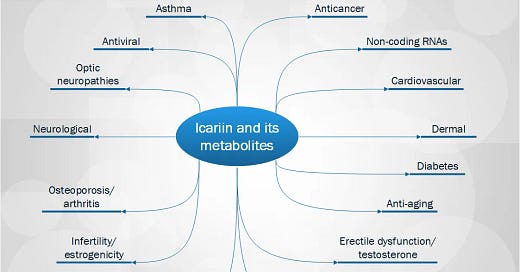


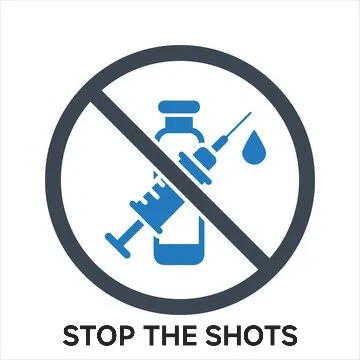








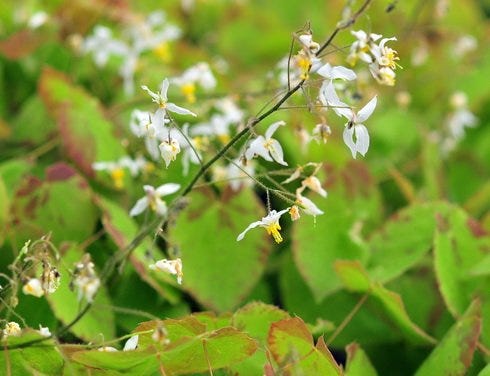
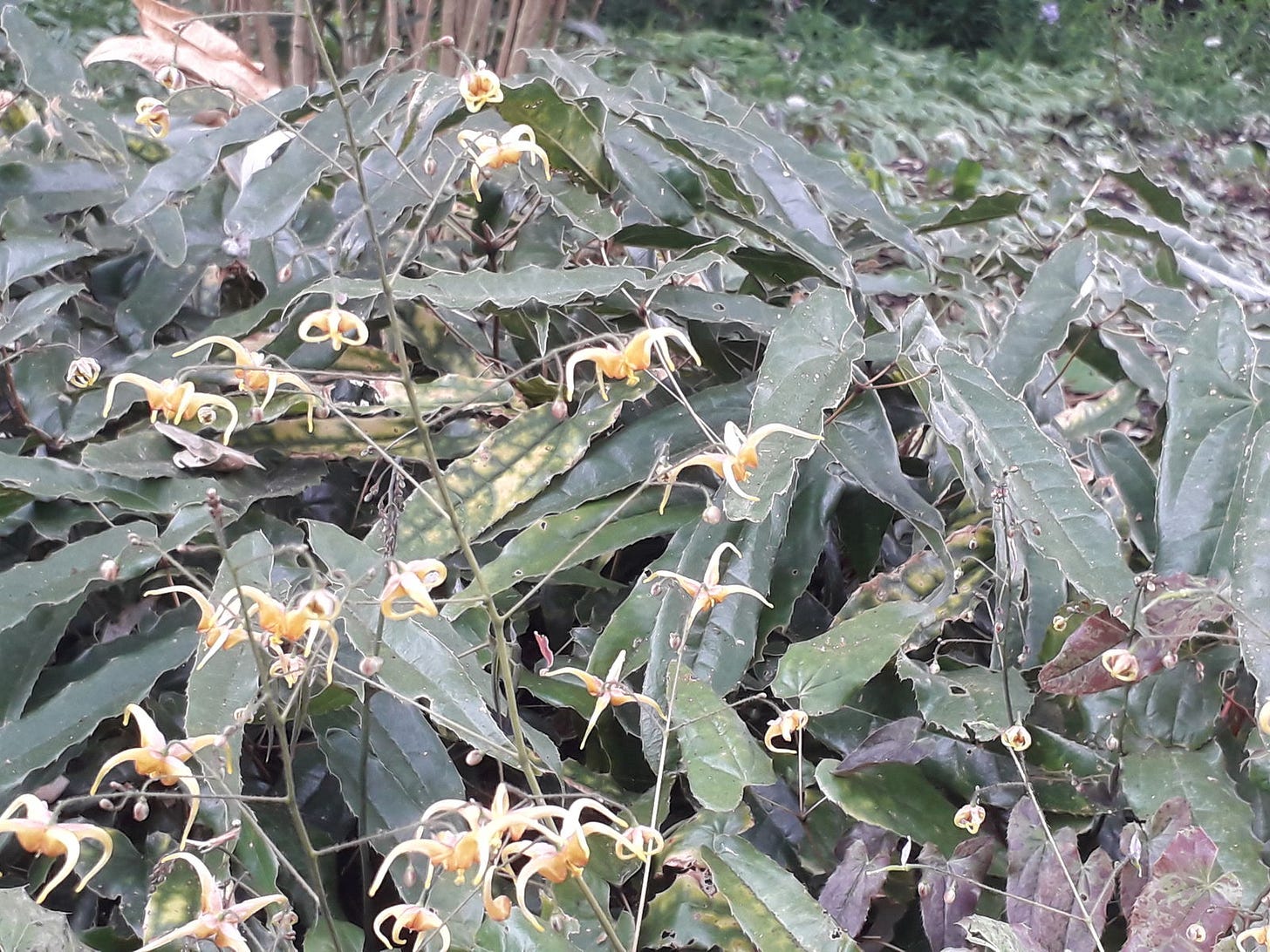
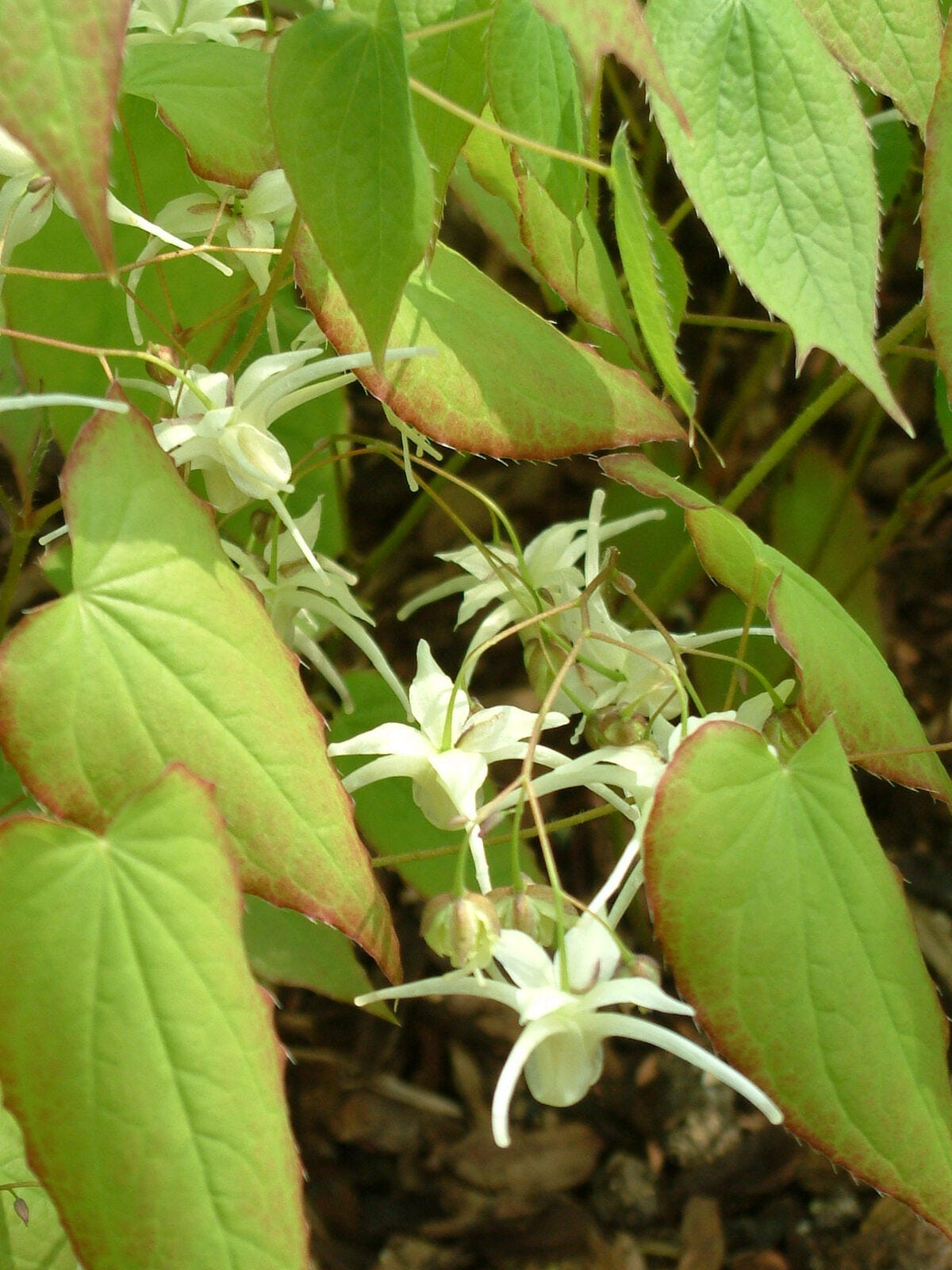




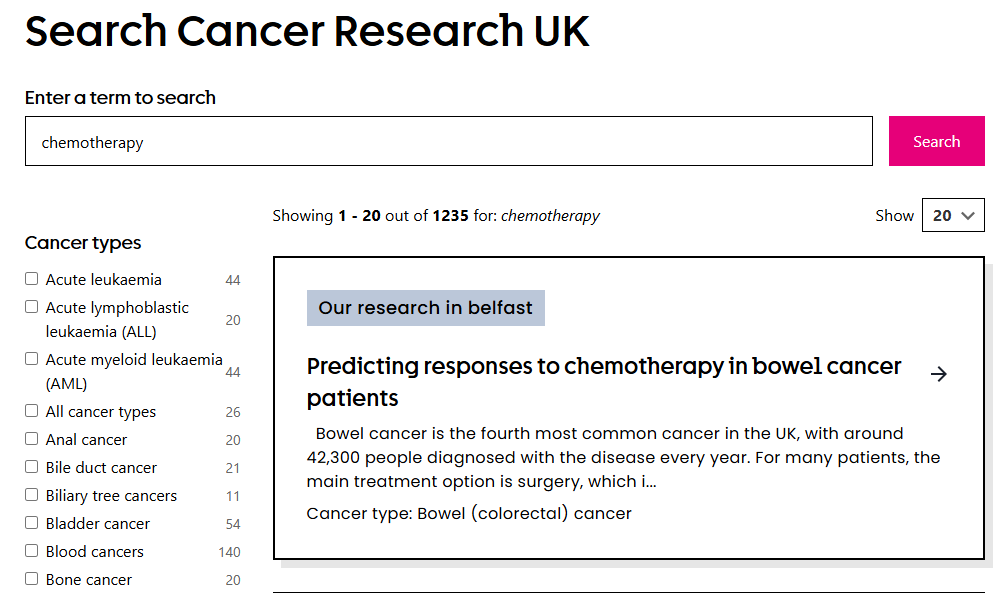







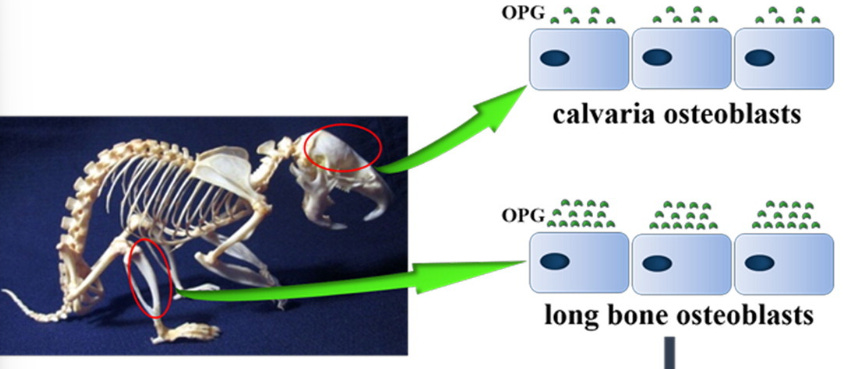
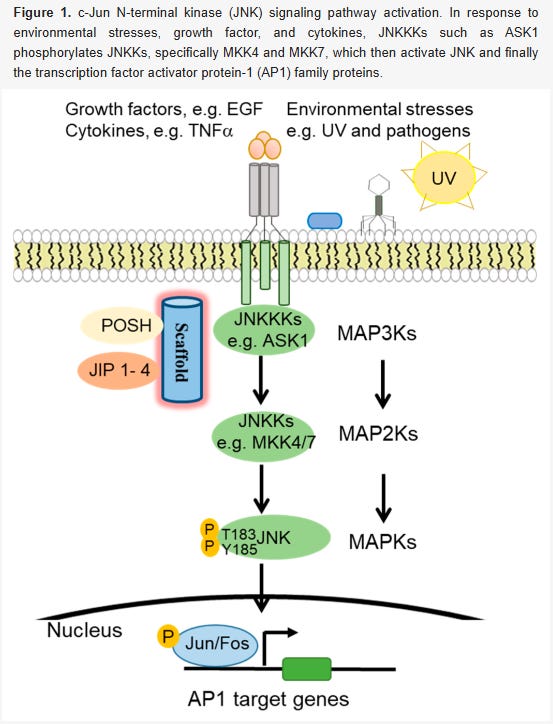

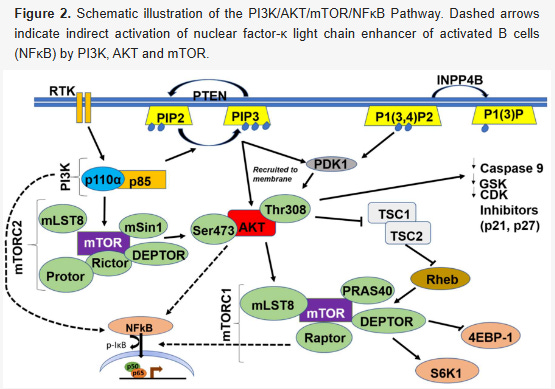





I am completely uniformed regarding IA so I had no idea there was such a thing as AI hallucinations, I wonder if they are spontaneously making things up or is it misinformation they are being given that is leading them to a false conclusion, either way it is quite disturbing. Thank you for a very interesting article, I look forward to part 2. I will watch the film you mentioned in your article Cut Poison Burn it sounds very interesting.
Cyprinus carpio, Kaempferol - highly underrated and one of my favorites. I sense another opus, but expect nothing less from a brilliant mind such as yours. Thank you.